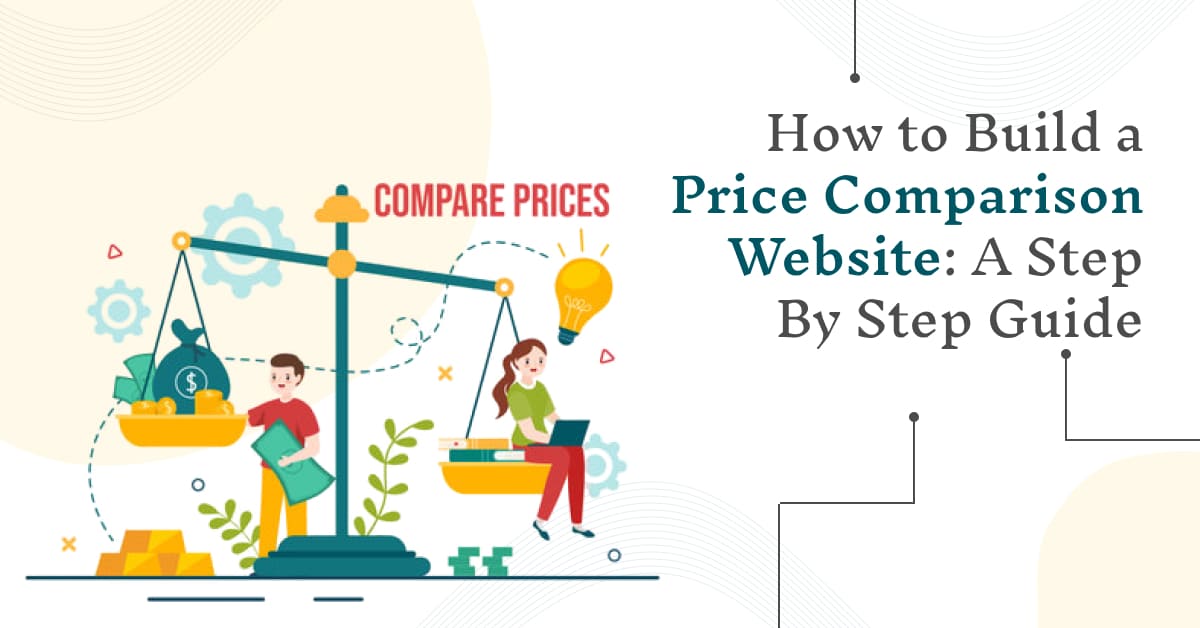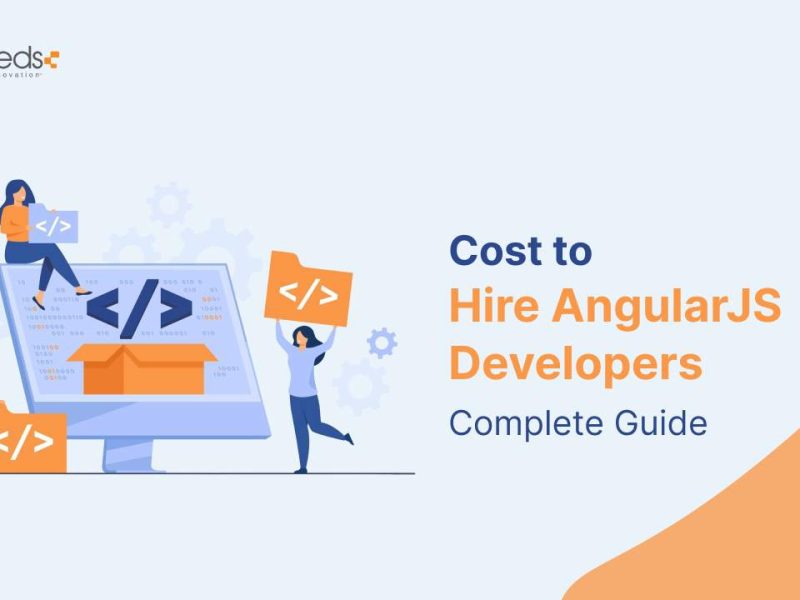Consumers always focus on the best deals and prices when buying in the current digital environment. Price comparison website has emerged as a powerful technique that aids users to compare prices and find the best offers across distinct online retailers. Developing a price comparison website can be rewarding and lets users to find the best deals and place an order. This step-by-step guide will focus on the key elements and features to consider in price comparison website development. Considering these features, you can develop a platform that delivers value to users and establishes a solid basis for success in competitive online marketplaces. Before moving to main section “how to build a price comparison website”, let’s discuss what a price comparison website is all about.



What is a Price Comparison Website?
A price comparison website is an online platform that lets users to compare the prices of products and services in across of multiple retailers or sellers. These websites collect data about products from distinct online stores and present them as in a structured and organized way.
It commonly appears in the form of charts or lists. Users can search for particular items or browse by distinct categories to find the products that they are interested in.
Price comparison websites provide users with valuable data like product descriptions, specifications, and, most significantly, the prices provided by different sellers.
By aggregating this data, users can rapidly and quickly compare the costs from various sources and determine the available best deals. Some price comparison websites facilitate added features like user ratings, reviews, and seller ratings. It can aid users in making an informed purchasing decision.
Price Comparison Website Statistics
Let’s break down the eye-opener statistics on price comparison websites.
- Between 2023 and 2030, there is a forecasted significant growth in the global market size for price comparison websites.
- In the USA, Google Shopping is a highly recognized price comparison portal with a brand awareness of 60%.
- In the USA, most online consumers commonly check the prices on the price comparison website before purchasing online.
How Does A Price Comparison Website Work?
A price comparison website commonly collects product data from different retailers or sellers. It also presents in a way that lets users to make comparisons and make informed buying decisions.
Let’s explore some of the easy steps that illustrate how a price comparison website functions:
Data Aggregation
The initial step considers aggregating product data from different sources, such as online retailers, e-commerce platforms, etc. This data may view product descriptions, prices, availability, and other relevant product details.
The website uses web scraping tools or develops a partnership with retailers to access and gather this data.
Data Processing and Comparison
After finding the product data from several sources, the website organizes it to develop a structured database. The data is normalized and standardized to ensure consistency across different products and sellers.
The website’s algorithms compare the prices and other attributes of same products, allowing users to compare the options side by side easily. Advanced filtered options and search functionality are often executed to enable users to refine their search according to particular criteria like price range, brand, or product features.
User Interface and Presentation
The processed and compared data is then presented to the users using interface and presentation. The website commonly facilitates search fields wherein users can enter keywords, browse the categories, and use filters to narrow their search.
The search results demonstrate relevant products, prices, seller data, and other details. Users can contrast the prices, read user reviews, and access the added data to make better decisions.
The price comparison website may simplify finding the best product prices by aggregating data from several sources, processing it, and presenting it as user-friendly. By delivering inclusive and easily comparable data, these websites may assist users in making informed buying decisions according to their budget and choices.



How Does Price Comparison Sites Make Money?
Price comparison website includes different methods to generate revenues. Here are some common ways to make money. You may use these revenue models according to specific business approaches and partnerships with sellers and advertisers.
Let’s explore each method in detail.
Cost Per Click
Price comparison websites are often considered in the affiliated marketing program. When a user clicks on product or service listings and is redirected to the seller’s websites, the price comparison site earns a small fee for each click. It is also known as a cost-per-click (CPC) model.
Commission
If a user purchases after clicking on the products and services using price comparison websites, the website may earn a commission from the seller. This commission is a percentage of sales volumes and a shared revenue model for price comparison websites.
Paid Accommodation
Some price comparison website provides paid accommodation to sellers or retailers. It indicates that sellers can pay a fee to have their products or services listed significantly or featured more on the website. Paid accommodation can consider options such as premium placement in search results or highlighting the listings.
Google Ads
The price comparison website may demonstrate the google ads or other online ads on their platforms. These ads are commonly targeted based on user behaviour and interests. When users click these advertisements, the price comparison sites earn revenue through pay-per-click ads.
Brand Advertisement
The price comparison website collaborates with the brands to showcase ads or sponsored content. It can consider the banners, sponsored listings, and product placements. Brands pay the price comparison site to access and visibility the increases through these ad opportunities.
Target Marketing
Price comparison websites gather valuable data on user preferences, search patterns, and buying behaviour. They may utilize this data to provide targeted marketing facilities to sellers or retailers.
For instance, they may provide insights and analytics to support the seller in optimizing their pricing approaches or product offerings. Sellers may pay for such analytics services or give exposure to customer data.
How Does the Most Popular Price Comparison Websites Works?
Different best price comparison websites let the users access the best price, compare products, and make Each platform has unique features and strengths based on the user’s needs and preferences.
Let’s explore each in detail.
Google Shopping
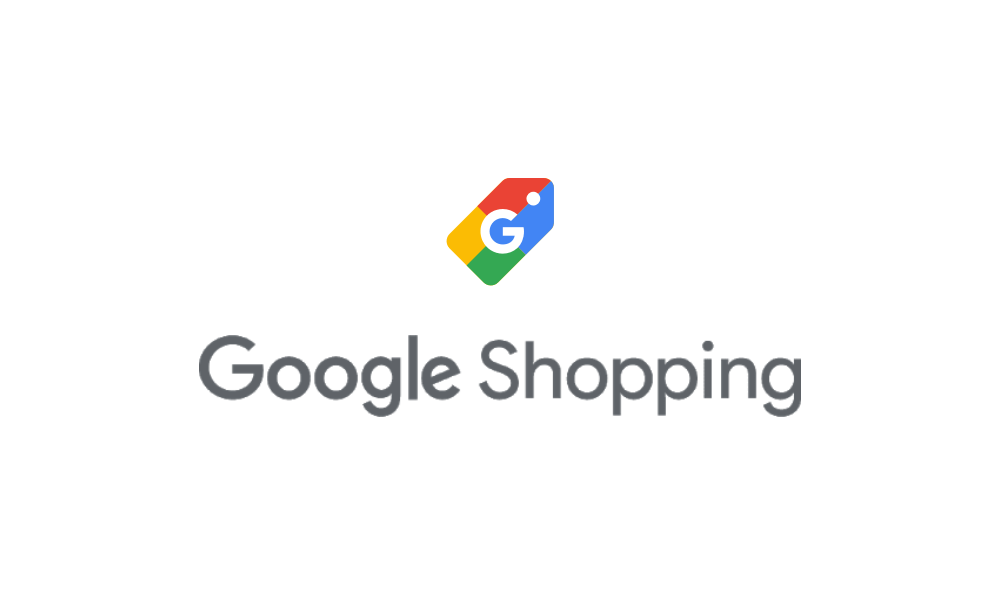


Google Shopping is a highly used price comparison service offered by Google. It lets users search for products across different online retailers and contrast the features, prices, and reviews.
Users can view product listings, check the prices from other sellers, and even make purchases directly through the platform. Google Shopping facilitates a seamless and convenient shopping experience with user-friendly interfaces and integration with Google’s search engine.
Shopzilla



Shopzilla is a renowned price comparison website that supports users to find the best deals in a broader category of products such as home goods, electronics, clothing, and much more. It facilitates detailed product data, user reviews, and ratings in the decision-making process.
It boasts features such as price notifications that alert users when prices drop on specific items. With a widespread presence in the United States, it holds significant sway over many shoppers seeking competitive rates.
PriceGrabber
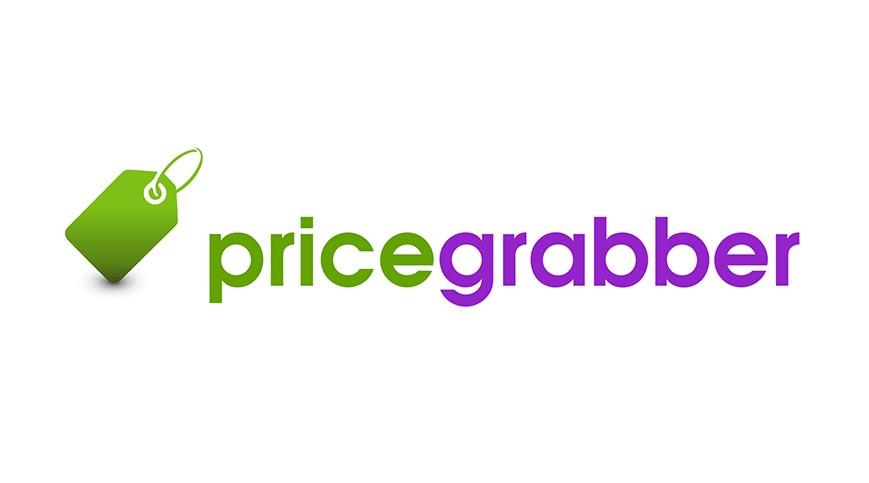


PriceGrabber is another well-known website that lets users compare and access the best offers across different categories. It facilitates inclusive product data, user reviews, and seller ratings. It also provides a feature known as “BottomLinePrice” that involves taxes and shipping costs in the displayed rates.
PriceGrabber also offers accurate comparisons for users. The website has a broader category of product listings and is known for its reliable and updated data.
PriceSpy
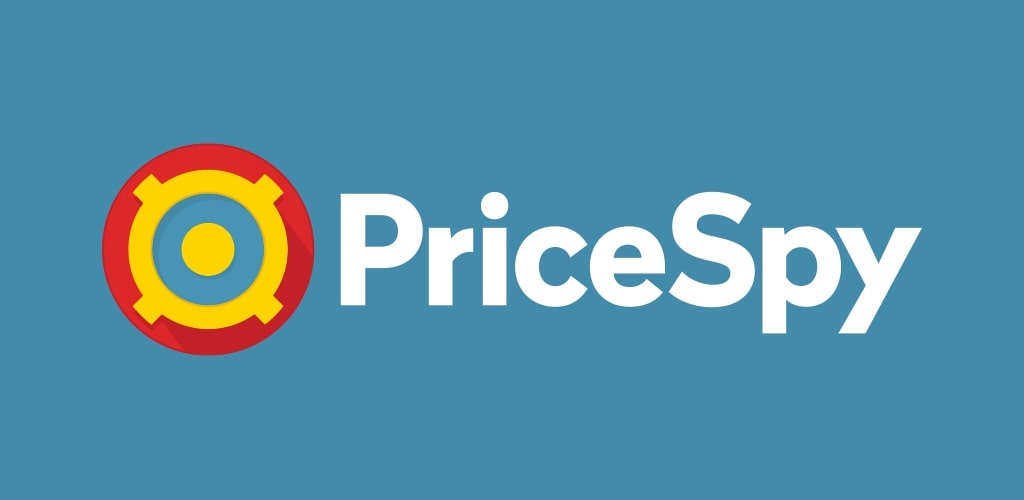


It is another popular price comparison platform founded in Sweden and has enlarged to different nations. PriceSpy lets users compare prices, read product reviews, and view detailed specifications for a broader category of products.
It facilitates the historical price data, letting users track the price fluctuations over time. The website’s user-friendly and price notification feature allows users to make the best purchasing decision.
CamelCamelCamel
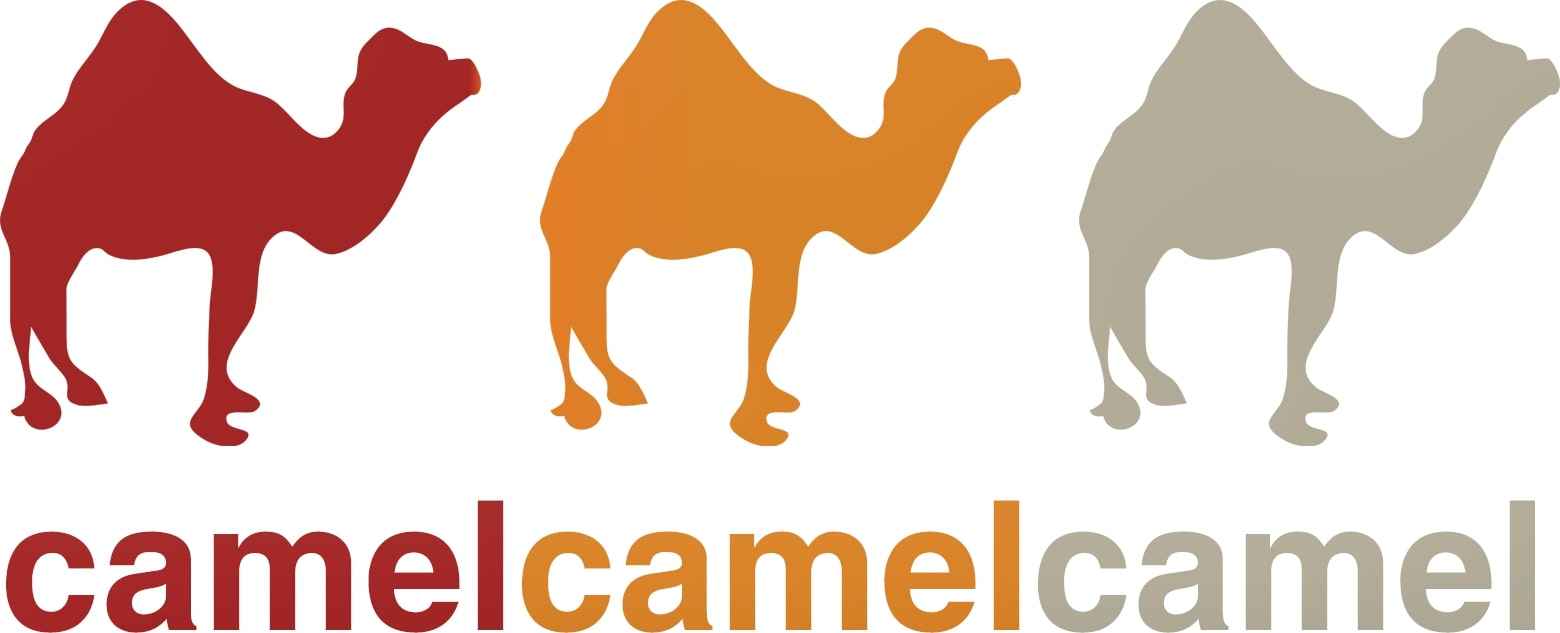


This is another price comparison website that emphasizes tracking price histories and offering price alerts for products on Amazon. It mainly targets users who want to assess Amazon prices and notify desired outcomes to reach a certain price threshold.
CamelCamelCamel facilitates detailed price alerts, historical data, and an easy-to-use browser extension that displays price history directly on the Amazon product page. It is a valuable technique for Amazon shoppers seeking to track pricing trends and make informed buying decisions.
The Key Features of a Price Comparison Website
Different features collectively improve the user experience, facilitate inclusive product data, and provide an effective price comparison for consumers.
Let’s discuss the features included in building a price comparison website.
Core Features:
Register and sign in
Users can develop an account and sign in to access customized features like saved searches, favourite alerts, and notifications.
Data Import and Processing
The website collects data from different sources like online retailers to manage product data, availability, and prices.
Search and Filters
Users can explore the products based on specific categories, brands, and other criteria. Filters let users refine their search results according to price range, features, ratings, and many more.
Product item card
Each product has item cards or pages showing detailed data such as product descriptions, seller details, specifications, and images.
Listings
The website displays listings of products from different sellers, showing them in a structured and organized way for simple comparison.
Product Comparison
Users can choose multiple products and compare their features, prices, and other relevant data side by side to make informed purchasing decisions.
User Space
Users have their own space within the website to handle their profiles, track their searches, save favourites, and access customized recommendations.
Price Update Notifications
Users can set price notifications to get updates when the price of a specified product reduces or reaches an expected threshold.
Seller area
Sellers have their own area or dashboard to manage their product listings, update rates, and assess performance metrics.
Price movement
Users can view the price movement and check price fluctuation for a specific product. It provides valuable insights and helps them to make well-versed purchasing decisions.
User reviews & ratings
Users can read and contribute to the product reviews and ratings. There are 9 out of 10 users check reviews before placing an order. A user review also influences the other shoppers and helps to increase the conversion rate.
Additional Features:
Let’s check out the added features considered in building a price comparison site.
Price History
The website records historical rates, lets users check how prices have changed over time, and compares prices.
Scanning a QR code and Barcode
Some price comparison websites provide the ability to scan the QR codes or barcodes by using the camera of mobile devices to retrieve the product data and rapidly contrast the prices.
A reward program
Some price comparison websites have a reward program wherein users can earn points, discounts, and other incentives to purchase from the website and engage with specific features.
Integrate payment gateway
Integration with the payment gateways lets users create purchases directly through the price comparison website and streamlines the purchasing procedure.
Managing and Customizing the profile
Users can manage their profiles, update their preferences, and customize the experience on the website as per their preferences.



How to Build a Price Comparison Website Step-by-Step?
Developing a highly demanded price comparison website requires more procedures and technical aspects. However, it might be unclear for non-technical readers, so let’s look closely at the price comparison website development steps.
Discovery Phase
Under the discovery phase, start by illustrating the objectives and scope of your price comparison website. Conduct market research to comprehend your specified audience and assess the competitors.
Assess the critical functionality and features your website will provide, like search capabilities, product comparison, and user reviews. Develop a project plan outlining the resources, timeline, and budget.
Design and Planning
After defining the project scope, we move on to website designing and planning. Create the wireframes and prototypes demonstrating the website’s layout, user interface, and navigation flow. You must design an attractive and user-friendly UI that aligns with your brand. Don’t forget to create your logo which you can easily make with the use of an AI logo maker.
Plan the database structure for efficiently storing and retrieving product data. You can also consult with price comparison portal development company to make effective designing and planning.
Development
Once designing and planning have taken place, you must proceed to the development phase. Front-end development considers executing the UI design using HTML, CSS, and JavaScript. It aids in developing a user-friendly price comparison website.
Back-end development emphasizes developing server-side functionalities such as search algorithms, data processing, and integration with third-party APIs. Execute the mechanism to import and process the product data from different sources.
Testing and Deployment
In this price comparison website development step, you must thoroughly test the website. Conduct the functional, usability, and compatibility testing to ensure the website functions as expected across diverse devices and browsers.
Identify the glitches and debug all issues to make bottleneck performance. You need to deploy the website on server hosting and configure the domain settings to make it accessible to the users.
Launch and Promotion
After deployment, it is time to launch and promote your price comparison websites. Create a marketing strategy to develop awareness and engage the users. Additionally, develop online marketing, social media campaigns, and SEO (Search engine optimization) to drive traffic on your platforms.
Develop a partnership with sellers and retailers to on-board their products onto your websites and provides incentive to attract users.
Support and Maintenance
Once your website is live, the shift focuses on support and maintenance. Facilitate customer support to assist the users with queries or issues they may address. Regular updates about the product data to ensure accuracy and timelines.
Assess and optimize the website performance, user feedback, and analytics to assess the areas for enhancement. Execute the security measures for protecting the user data and transactions. Constant update and enhancement of the features according to user feedback and market trends.



Technology Stack to Make a Price Comparison Website
To develop a leading price comparison website, choose the best tech stacks. A solution that completes the all-set standards and is optimized for higher performance will always stay ahead of rivalry.
Let’s discuss the list of technologies that eBizneeds developers recommend to use.
| Component |
Technology Choices |
| Back-end | Ruby (Ruby on Rails), PHP, and Python (Django, Flask) |
| Front-end | JavaScript (Angular, React, Vue.js), CSS3, and HTML5 |
| Database | MongoDB, MySQL, and PostgreSQL |
| Server | Nginx, Node.js, and Apache |
| Third-party Integration | Data providers (e.g., XML, JSON, SOAP), and affiliate networks, API integrations for payment gateways |
| Mobile Development | Flutter, React Native, and NativeScript |
The above techs are just an example, as different tech stacks are used in developing price comparison websites. It is based on the project requirements, development preferences, and expertise.
How Much Does It Cost to Build a Price Comparison Website?
Building a price comparison website can range anywhere from under $20,000 – $125,000+. The cost of developing a price comparison website may vary and significantly relied on different factors such as the development team’s rates and locations.
For more accurate cost estimation, contact a price comparison portal development company and discuss your project needs. They can offer a personalized quote according to specific requirements and the factors discussed below.
Let’s break down the estimated price comparison website development cost for each factor.
Cost Factors
Let’s check the cost structure breakdown for hiring different types of teams.
| Type of a team |
Average cost(in $) |
| Local development agency | 150,000 |
| In-house | 100,000 |
| Outsourcing agency | 60,000 to 70,000 |
| Freelancers | 40,000 to 50,000 |
The development cost of the price comparison website may differ depending on the development team. For example, a local development agency costs much more than freelancers, in-house, and outsourcing agencies.
Teams Location
To assess the price, we use the illustration below and local development agencies’ pricing.
|
Location of a team |
Average cost (in $) |
| The US | 150,000 |
| Australia | 100,000 |
| Canada | 120,000 |
| The UK | 110,000 |
| South Asia | 40,000 |
| Eastern Europe | 60,000 |
Development costs may vary considerably depending on the location of the development team. Different regions and countries have different hourly rates for software development services. For example, USA rates are higher than in Europe, Canada, Asia, and Australia.



Conclusion
Developing the price comparison website needs cautious planning, focus on in-depth details and deep knowledge about the target audience and market. Using the step-by-step guide discussed above, you can develop a dynamic and user-friendly platform.
It lets the consumers compare the prices, make well-versed purchasing decisions, and save money.
It would be best to remember to emphasize data accuracy, usability, and strong partnerships with suppliers and retailers to ensure the success and profitability of your price comparison websites. Using dedication, perseverance, and continuous enhancement, your price comparison website development can become a valuable resource in the ever-changing landscape of online purchasing.
FAQs
Price comparison website is an online platform that lets users compare the prices of products or services across different retailers or providers. It may aggregate the data from different sources and present it in a user-friendly format, supporting the consumers in finding the best deals and making informed buying decisions.
Price comparison sites collect the products and services from multiple sources like service providers and online retailers. They also use unique algorithms and techs to organize and display this data in a structured way. It lets the users easily compare the prices, features, and other relevant data. Users can search for particular products or browse the categories to find the available best options.
Price comparison sites are primarily targeted to consumers but can also benefit businesses. Retailers and service providers can use such platforms to assess market trends, comprehend competitor pricing, and optimize pricing structures. Price comparison websites develop a win-win situation by connecting consumers with the best deals and supporting businesses to stay competitive.
Price comparison website provides different benefits to consumers. Let’s discuss it.
Time and cost savings: Users can compare the same products on different websites without visiting each platform. It can lead to generating better results in less cost and time.
Informed decision-making: These price comparison websites facilitate detailed data about the products and services, such as consumer reviews, features, and specifications. Users can make well-versed decisions according to these insights.
Access to a broader range of options: Price comparison websites often have a more extensive database about the products and services, providing the consumer access to a more comprehensive choice than they might find on the individual retailer websites.
Transparency and trust: By offering an unbiased comparison and also user review. These websites may enhance transparency and support to develop trust between consumers and retailers.



Naveen Khanna is the CEO of eBizneeds, a company renowned for its bespoke web and mobile app development. By delivering high-end modern solutions all over the globe, Naveen takes pleasure in sharing his rich experiences and views on emerging technological trends. He has worked in many domains, from education, entertainment, banking, manufacturing, healthcare, and real estate, sharing rich experience in delivering innovative solutions.
